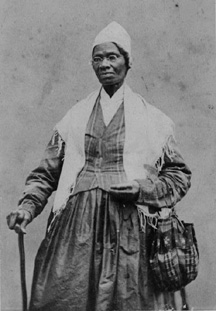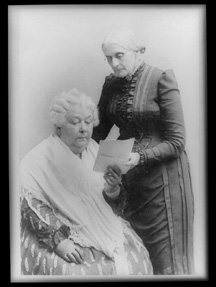Throughout America, Independence Day festivities are reaching new heights of patriotism. Much has been said about the cherished freedoms, which Americans take more seriously since Sept. 11, when terrorists attacked the East Coast. Independence Day also is an opportunity to remember that some of America’s greatest battles for freedom and human rights were with itself, not foreign forces. 
The NHS/UNMC Employee Diversity Network, whose mission statement is “To create a truly culturally diverse community enhancing an environment that promotes an open exchange of ideas, knowledge, understanding and support,” acknowledges that two of America’s greatest moments in diversity were the ratification of the 14th Amendment and 19th Amendments to the U.S. Constitution.
The 14th Amendment
The 14th Amendment gave African Americans – for the first time — equal protection under the law. President Abraham Lincoln’s Emancipation Proclamation set the slaves free in 1863, but it wasn’t until July 9, 1868, that blacks finally had equal protection under the Constitution. In fact, it is this amendment that first granted all persons born or naturalized in the United Sates immediate and full rights as American citizens. The amendment protected the freedmen (former slaves) from ever being made slaves again.
The 19th Amendment
The 19th Amendment, ratified in 1920, crowned more than 90 years of struggle by American women to receive the right to vote. The amendment declared that the right to vote could not be denied on account of a person’s gender.
Leading the charge
Two women loom large in the successful enactment of each amendment, despite centuries of struggles by thousands of nameless activists. Sojourner Truth was an African American slave who obtained her freedom and went on to international acclaim as a human rights activist for both black equality and women’s rights. Elizabeth Cady Stanton was the true mastermind behind the eventual granting of voting rights to women in America. Her contemporary, Susan B. Anthony, may be the better-known women’s rights symbol (Anthony graces the silver dollar), but Stanton is the one who engineered the first national women’s right convention in America in 1848 and led the charge for the next 50 years.
Sojourner Truth
 Sojourner Truth is a giant to both efforts because the women’s rights movement grew in large part out of the anti-slavery movement. She was born Isabella Baumfree in Hurley, New York, in 1797, one of 13 children, all of whom were resold as slaves and never saw each other again. She was released 30 years later following the New York Anti-slavery Law of 1827 and immediately used her freedom to begin advocating black rights and women’s rights. She changed her name to Sojourner Truth in 1843.
Sojourner Truth is a giant to both efforts because the women’s rights movement grew in large part out of the anti-slavery movement. She was born Isabella Baumfree in Hurley, New York, in 1797, one of 13 children, all of whom were resold as slaves and never saw each other again. She was released 30 years later following the New York Anti-slavery Law of 1827 and immediately used her freedom to begin advocating black rights and women’s rights. She changed her name to Sojourner Truth in 1843.
In 1851, Truth gave an impromptu address at the Women’s Rights Convention in Akron, Ohio. Her speech, titled “Ain’t I a Woman” had a great impact at the convention and is considered a classic expression of women’s rights. During the convention, she sat in the audience and listened to several men arrogantly discuss man’s superiority over a woman. Truth interrupted a speaker and took the podium. She then countered each male comment, explaining how she had done all the physically demanding chores and handled the toughest issues that men had and in most cases, outdid the man. Each time she emphasized her point by exclaiming, “And ain’t I a woman.”
Truth went on to become a giant in the 19th century civil rights movement. She was one of the first African American women to address the U.S. Congress and two Presidents. She fought major black civil rights leaders who advocated that, for political expediency, blacks should concentrate on the voting rights for black men. Truth devoted her life to gaining full equal protection and rights under the law for everyone in America, regardless of race or gender.
Elizabeth Cady Stanton
 Elizabeth Cady Stanton may well have been America’s first “super mom.” She became the lead feminist philosopher of the first generation of women’s rights activists in America. In fact, one of the reasons Susan B. Anthony became better known, is that Stanton rarely traveled until her seven children were grown. Many of Anthony’s speeches were written by Cady, who would have delivered them herself, but refused to spend so much time away from her kids.
Elizabeth Cady Stanton may well have been America’s first “super mom.” She became the lead feminist philosopher of the first generation of women’s rights activists in America. In fact, one of the reasons Susan B. Anthony became better known, is that Stanton rarely traveled until her seven children were grown. Many of Anthony’s speeches were written by Cady, who would have delivered them herself, but refused to spend so much time away from her kids.
Stanton was born in Johnstown, N.Y., in 1815, and was the daughter of the town’s most prominent citizens. Along with her formal education in exclusive private schools and college, she received a considerable informal legal education from her father, who trained many of New York’s top lawyers.
She married Henry B. Stanton in 1840 and, due to their large family, didn’t travel freely until after the Civil War. Amazingly, she became the architect of woman’s liberation in America while giving priority to her home life.
Stanton wrote the 1848 Seneca Falls declaration that created the first national women’s rights convention in U.S. history. Stanton always maintained that feminism and the movement to abolish slavery were linked. In 1876, Susan B. Anthony scandalized the nation by reading, uninvited, a Declaration of Rights of the Women of the United States — a declaration actually written by Stanton — at the Centennial celebration of America’s independence in Washington, D.C. Eventually, Stanton and Anthony collaborated on the first three volumes of a “History of Woman Suffrage,” covering the period of 1848 to 1877.
After nearly 30 years of non-stop travel in the U.S. and overseas, Stanton did some of her greatest writing in the 1880s after she retired from travel. She died in 1902, 18 years before women received voting rights, but there is no question that her contribution to the 19th Amendment is the stuff of legends.
Photos in descending order:
1) Women suffragists picketing in front of the White house in February 1917.
2) Sojourner Truth. Portrait taken around 1864.
3) Elizabeth Cady Stanton, seated, and Susan B. Anthony, standing. Portrait taken between 1880 and 1902.